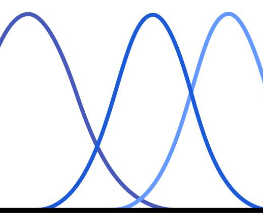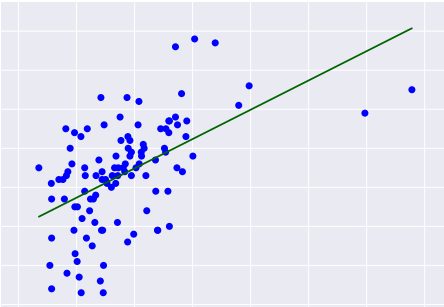- by Jimmy Fisher
- Oct 19, 2024
ANOVAs and MANOVAs
- By Jimmy Fisher
- Oct 19, 2024
- in Techniques

ANOVA (Analysis of Variance) and MANOVA (Multivariate Analysis of Variance) are statistical methods of determining the significance of mean differences across multiple groups. These techniques are especially useful in contexts where multiple factors or variables are present, such as in complex experimental settings.
ANOVA is utilized when examining a single
dependent variable across various independent groups. Its core objective is to
compare the means of these groups to establish whether any significant
differences exist. The primary statistical output of ANOVA is the F-statistic,
which represents the ratio of between-group variance to within-group variance.
A significant F-statistic suggests that at least one group differs in its mean
value.
MANOVA extends the capabilities of ANOVA by
enabling the simultaneous analysis of multiple dependent variables. This is
particularly advantageous when the dependent variables are intercorrelated,
allowing MANOVA to more accurately assess the impact of independent groups
while considering these correlations. Like ANOVA, MANOVA yields an F-statistic,
yet it incorporates variance-covariance relationships among the variables.
Both ANOVA and MANOVA require meeting certain assumptions:
normality, homogeneity of variances (for ANOVA) or covariances (for MANOVA),
and the independence of observations. Failure to meet these assumptions may
compromise the integrity of the results.
Example in Python
# ANOVA Example import pandas as pd import statsmodels.api as sm from statsmodels.formula.api import ols # Sample data for ANOVA data = {'Group': ['A', 'A', 'B', 'B', 'C', 'C'], 'Score': [23, 26, 27, 22, 24, 28]} df = pd.DataFrame(data) # Fit the model for ANOVA model = ols('Score ~ C(Group)', data=df).fit() anova_result = sm.stats.anova_lm(model, typ=2) print(anova_result) # MANOVA Example from statsmodels.multivariate.manova import MANOVA # Sample data for MANOVA data = {'Group': ['A', 'A', 'B', 'B', 'C', 'C'], 'Metric1': [23, 26, 27, 22, 24, 28], 'Metric2': [15, 18, 19, 14, 16, 20]} df = pd.DataFrame(data) # Fit the MANOVA model manova = MANOVA.from_formula('Metric1 + Metric2 ~ C(Group)', data=df) manova_result = manova.mv_test() print(manova_result)
In the provided code, ANOVA is used to compare one dependent variable ('Score') across different groups. In contrast, MANOVA evaluates two dependent variables ('Metric1' and 'Metric2') to ascertain the impact of group differences while considering correlations between the dependent variables. These statistical techniques are widely used in fields like psychology, biology, and social sciences, offering invaluable insights into how various independent variables influence outcomes.
In the provided code, ANOVA is used to compare one dependent variable ('Score') across different groups. In contrast, MANOVA evaluates two dependent variables ('Metric1' and 'Metric2') to ascertain the impact of group differences while considering correlations between the dependent variables. These statistical techniques are widely used in fields like psychology, biology, and social sciences, offering invaluable insights into how various independent variables influence outcomes.
Example in R
# Load necessary libraries library(dplyr) # For data manipulation library(car) # For Anova (Type II) library(stats) # For aov library(MASS) # For MANOVA # ANOVA Example # Sample data for ANOVA data_anova <- data.frame(Group = factor(c('A', 'A', 'B', 'B', 'C', 'C')), Score = c(23, 26, 27, 22, 24, 28)) # Fit the model for ANOVA anova_model <- aov(Score ~ Group, data = data_anova) anova_result <- Anova(anova_model, type = "II") # Type II ANOVA print(summary(anova_result)) # MANOVA Example # Sample data for MANOVA data_manova <- data.frame(Group = factor(c('A', 'A', 'B', 'B', 'C', 'C')), Metric1 = c(23, 26, 27, 22, 24, 28), Metric2 = c(15, 18, 19, 14, 16, 20)) # Fit the MANOVA model manova_model <- manova(cbind(Metric1, Metric2) ~ Group, data = data_manova) manova_result <- summary(manova_model, test = "Pillai") # Pillai's trace test print(manova_result)
ANOVA: The aov function in R fits an ANOVA model. Here, we use ANOVA from the car package to specify Type II ANOVA (similar to typ=2 in Python’s anova_lm).
MANOVA: The manova function fits the model in R, and
summary (with test = "Pillai") performs Pillai's trace test,
equivalent to Python’s mv_test in statsmodels.
MANOVA and ANOVA compare variance between groups and are important statistical methods to understand. For more detail on how this approach works, check out the following:
- https://www.youtube.com/watch?v=EFdlFoHI_0I&list=PL7FCBC940F3067FD0
- https://statisticsbyjim.com/anova/multivariate-anova-manova-benefits-use/
- https://statistics.laerd.com/spss-tutorials/one-way-manova-using-spss-statistics.php
- https://www.geeksforgeeks.org/manova-multivariate-analysis-of-variance/
MANOVA and ANOVA compare variance between groups and are important statistical methods to understand. For more detail on how this approach works, check out the following:
- https://www.youtube.com/watch?v=EFdlFoHI_0I&list=PL7FCBC940F3067FD0
- https://statisticsbyjim.com/anova/multivariate-anova-manova-benefits-use/
- https://statistics.laerd.com/spss-tutorials/one-way-manova-using-spss-statistics.php
- https://www.geeksforgeeks.org/manova-multivariate-analysis-of-variance/





